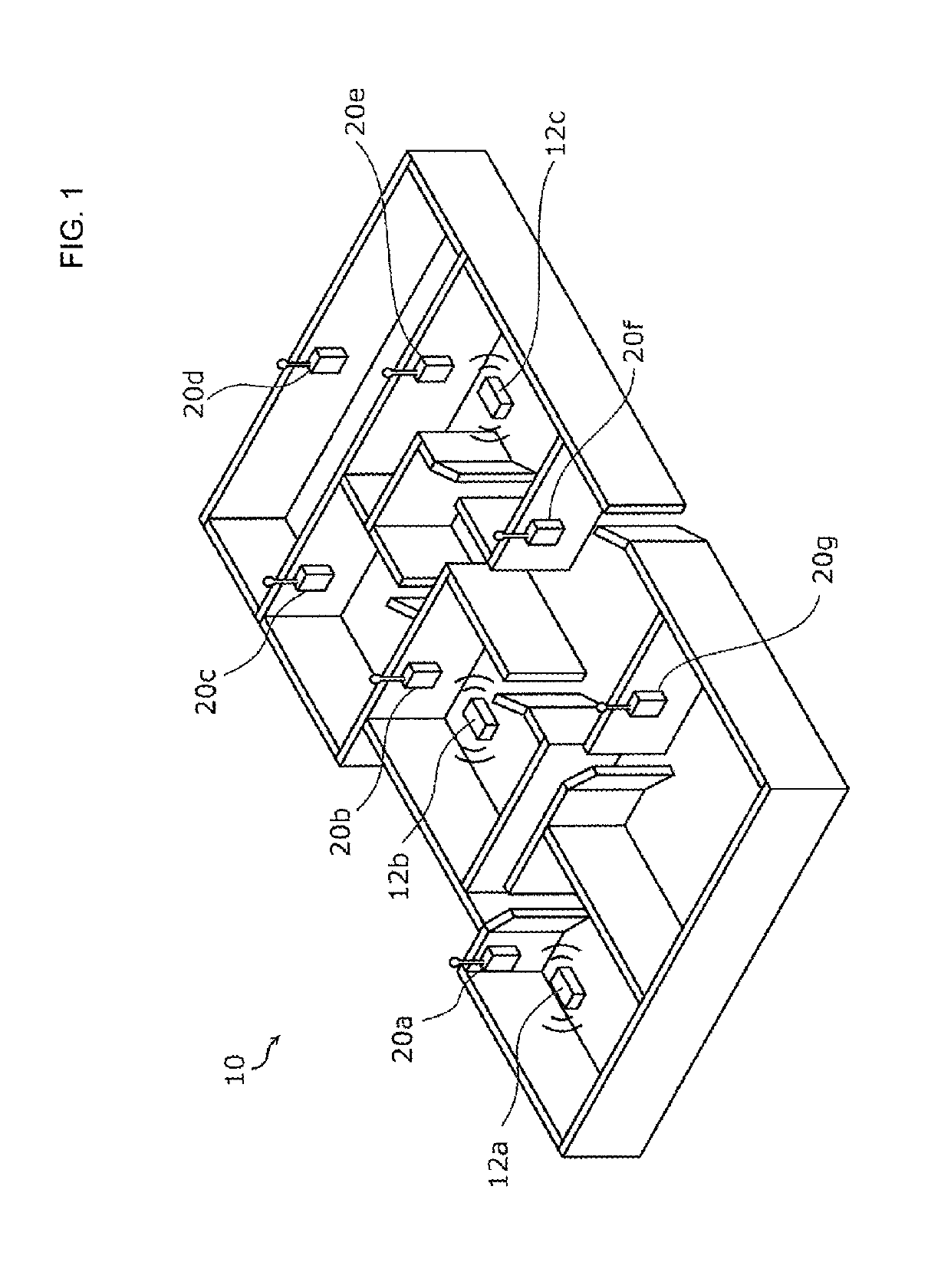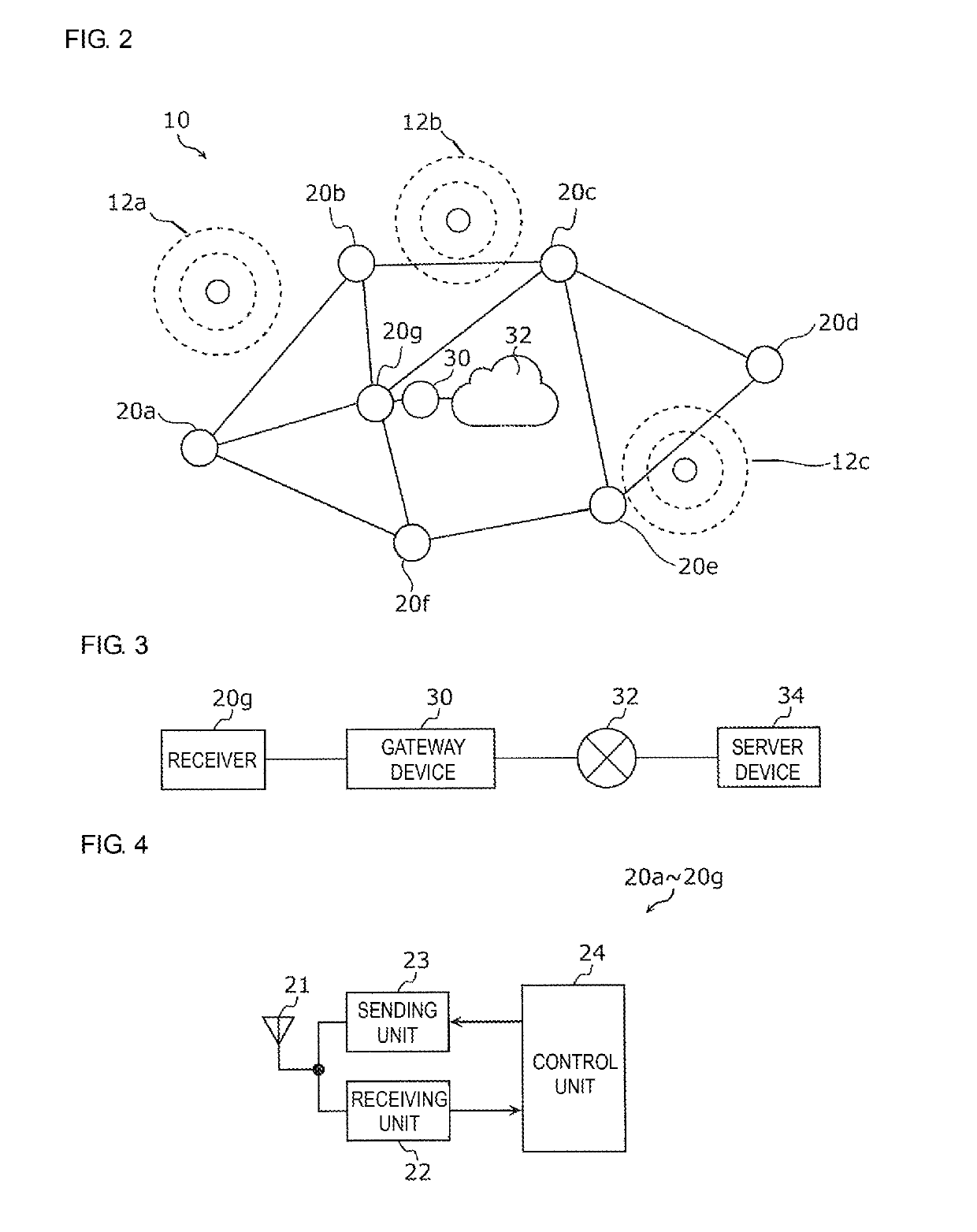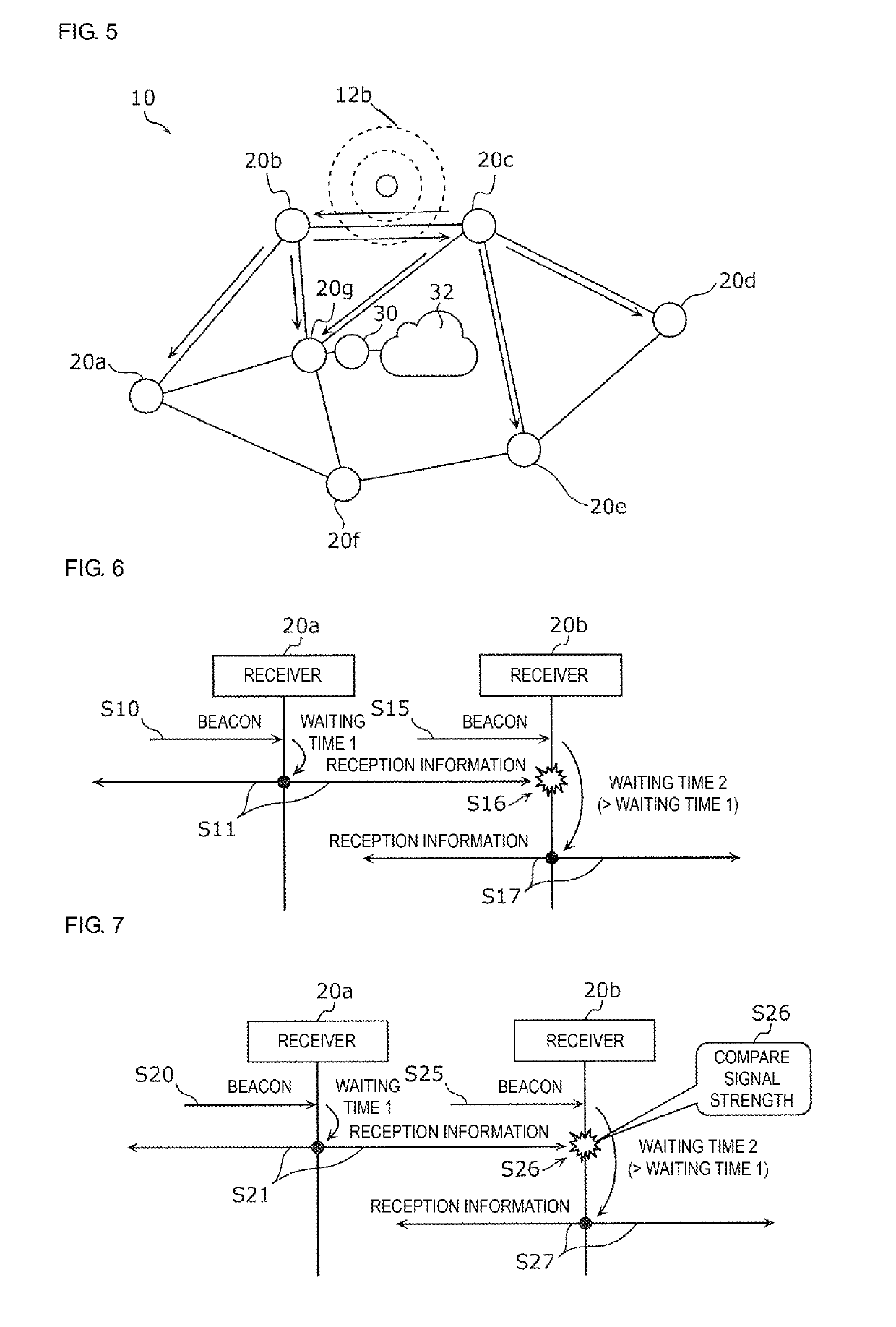Position detection system and receiver
- Summary
- Abstract
- Description
- Claims
- Application Information
AI Technical Summary
Benefits of technology
Problems solved by technology
Method used
Image
Examples
modification 1
[0074]In Modification 1, when the receiving unit 22 in each of the receivers 20a to 20g receives the beacon, the control unit 24 sends the first reception information after the lapse of a waiting time that is set to be longer as the received beacon has lower signal strength. However, the control unit 24 stops sending of the first reception information when the second reception information is received from the other receiver during the lapse of the waiting time after receiving the beacon.
[0075]FIG. 6 is a communication sequence chart illustrating the operations of the receivers in Modification 1. FIG. 6 illustrates the operations in the case of receiving the same beacon by two receivers 20a and 20b. It is assumed that the signal strength of the beacon received by the receiver 20a is higher than the signal strength of the beacon received by the receiver 20b.
[0076]In the receiver 20a, when the receiving unit 22 receives the beacon (S10), the control unit 24 determines, from the signal...
modification 2
[0081]In Modification 2, on the premise of sending the first reception information during the waiting time as in above Modification 1, when the receiving unit 22 in each of the receivers 20a to 20g receives the beacon during the waiting time, the control unit 24 further compares the signal strength of the received beacon (signal strength of the beacon received by the relevant receiver being also called “first signal strength” hereinafter) with the signal strength indicated by information contained in the second reception information (the signal strength indicated by the information contained in the second reception information being also called “second signal strength” hereinafter), and stops sending of the first reception information if the second signal strength is higher than the first signal strength. A margin (offset) may be taken into consideration in the above comparison. For instance, the sending of the first reception information may be stopped if the second signal strength...
modification 3
[0087]In Modification 3, each of the moving objects 12a to 12c sends the beacon containing a sequence number that is updated whenever it sends the beacon.
[0088]The control unit 24 in each of the receivers 20a to 20g operates basically in the same manner as that in above Modification 2. When sending the first reception information, however, the control unit 24 sends, from the sending unit 23, the first reception information to which the sequence number is added. Furthermore, when comparing the first signal strength and the second signal strength in above Modification 2, the control unit 24 compares the signal strengths of the beacons having the same sequence number.
[0089]FIG. 8 is a communication sequence chart illustrating the operations of the receivers according to Modification 3. It is here assumed that there exist the same situations as those in Modification 1 illustrated in FIG. 6 (namely, that two receivers 20a and 20b receive the same beacon, and that the signal strength of t...
PUM
 Login to View More
Login to View More Abstract
Description
Claims
Application Information
 Login to View More
Login to View More - R&D
- Intellectual Property
- Life Sciences
- Materials
- Tech Scout
- Unparalleled Data Quality
- Higher Quality Content
- 60% Fewer Hallucinations
Browse by: Latest US Patents, China's latest patents, Technical Efficacy Thesaurus, Application Domain, Technology Topic, Popular Technical Reports.
© 2025 PatSnap. All rights reserved.Legal|Privacy policy|Modern Slavery Act Transparency Statement|Sitemap|About US| Contact US: help@patsnap.com



